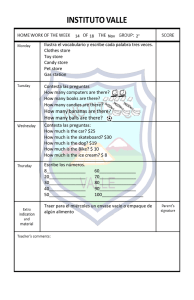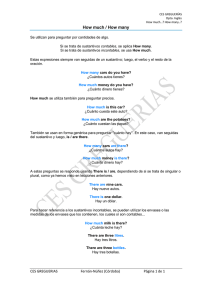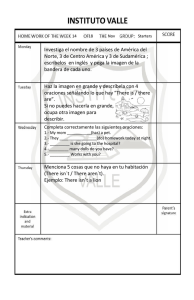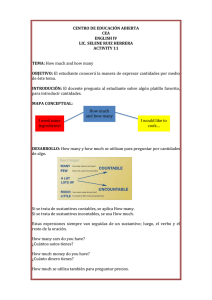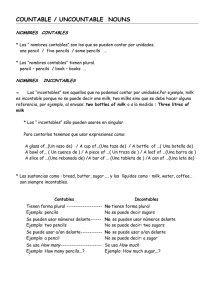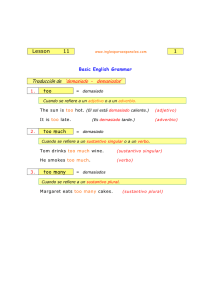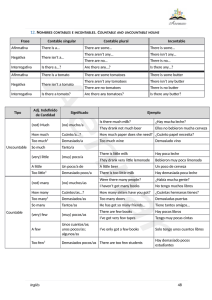COUNTABLE AND UNCOUNTABLE NOUNS Algunos nombres son
Anuncio
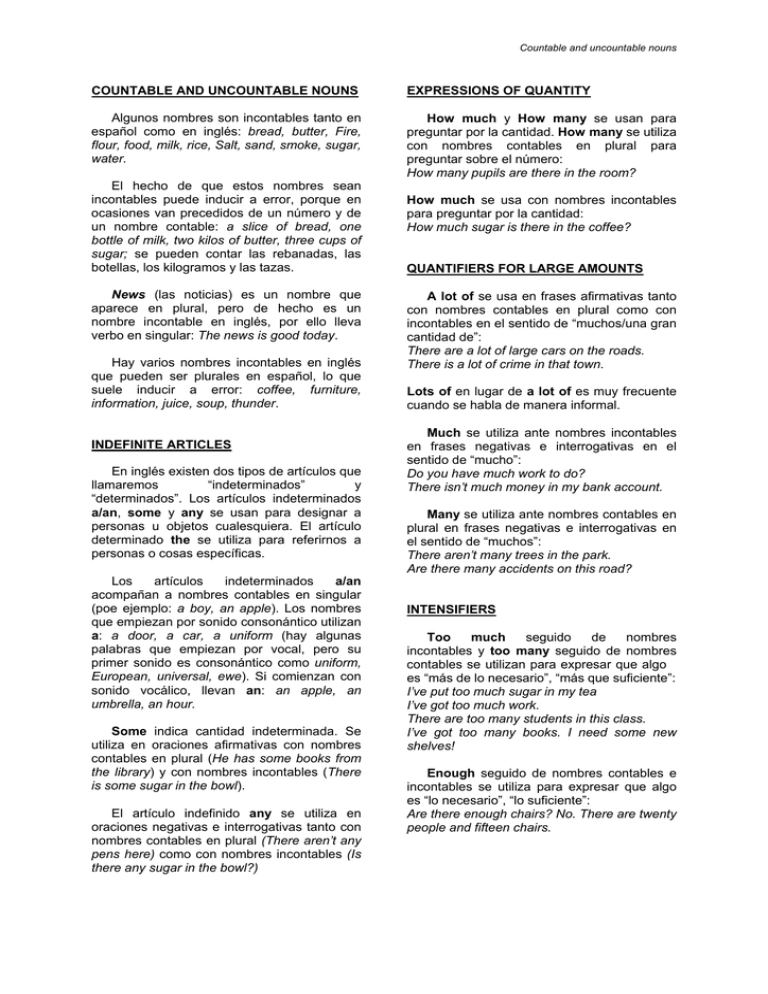
Countable and uncountable nouns COUNTABLE AND UNCOUNTABLE NOUNS EXPRESSIONS OF QUANTITY Algunos nombres son incontables tanto en español como en inglés: bread, butter, Fire, flour, food, milk, rice, Salt, sand, smoke, sugar, water. How much y How many se usan para preguntar por la cantidad. How many se utiliza con nombres contables en plural para preguntar sobre el número: How many pupils are there in the room? El hecho de que estos nombres sean incontables puede inducir a error, porque en ocasiones van precedidos de un número y de un nombre contable: a slice of bread, one bottle of milk, two kilos of butter, three cups of sugar; se pueden contar las rebanadas, las botellas, los kilogramos y las tazas. News (las noticias) es un nombre que aparece en plural, pero de hecho es un nombre incontable en inglés, por ello lleva verbo en singular: The news is good today. Hay varios nombres incontables en inglés que pueden ser plurales en español, lo que suele inducir a error: coffee, furniture, information, juice, soup, thunder. INDEFINITE ARTICLES En inglés existen dos tipos de artículos que llamaremos “indeterminados” y “determinados”. Los artículos indeterminados a/an, some y any se usan para designar a personas u objetos cualesquiera. El artículo determinado the se utiliza para referirnos a personas o cosas específicas. Los artículos indeterminados a/an acompañan a nombres contables en singular (poe ejemplo: a boy, an apple). Los nombres que empiezan por sonido consonántico utilizan a: a door, a car, a uniform (hay algunas palabras que empiezan por vocal, pero su primer sonido es consonántico como uniform, European, universal, ewe). Si comienzan con sonido vocálico, llevan an: an apple, an umbrella, an hour. Some indica cantidad indeterminada. Se utiliza en oraciones afirmativas con nombres contables en plural (He has some books from the library) y con nombres incontables (There is some sugar in the bowl). El artículo indefinido any se utiliza en oraciones negativas e interrogativas tanto con nombres contables en plural (There aren’t any pens here) como con nombres incontables (Is there any sugar in the bowl?) How much se usa con nombres incontables para preguntar por la cantidad: How much sugar is there in the coffee? QUANTIFIERS FOR LARGE AMOUNTS A lot of se usa en frases afirmativas tanto con nombres contables en plural como con incontables en el sentido de “muchos/una gran cantidad de”: There are a lot of large cars on the roads. There is a lot of crime in that town. Lots of en lugar de a lot of es muy frecuente cuando se habla de manera informal. Much se utiliza ante nombres incontables en frases negativas e interrogativas en el sentido de “mucho”: Do you have much work to do? There isn’t much money in my bank account. Many se utiliza ante nombres contables en plural en frases negativas e interrogativas en el sentido de “muchos”: There aren’t many trees in the park. Are there many accidents on this road? INTENSIFIERS Too much seguido de nombres incontables y too many seguido de nombres contables se utilizan para expresar que algo es “más de lo necesario”, “más que suficiente”: I’ve put too much sugar in my tea I’ve got too much work. There are too many students in this class. I’ve got too many books. I need some new shelves! Enough seguido de nombres contables e incontables se utiliza para expresar que algo es “lo necesario”, “lo suficiente”: Are there enough chairs? No. There are twenty people and fifteen chairs.
